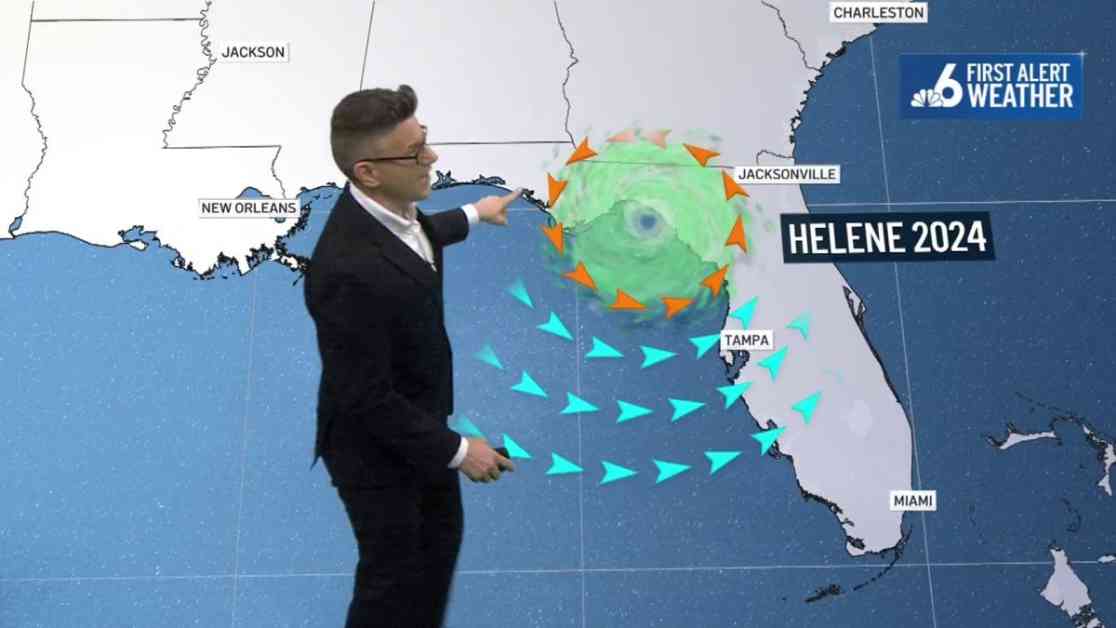When Hurricane Helene hit Perry, Florida, as a Category 4 storm, it was a historic event. It marked the strongest storm to ever hit the Big Bend and the third landfall in the region in the last two hurricane seasons. This impact was felt six years after Hurricane Michael, the Panhandle’s worst storm on record.
Understanding the effects of hurricanes on different areas is crucial for residents to stay safe. Tampa Bay, for example, can experience varying impacts based on whether a storm tracks east or west of the area. Hurricanes, characterized by a large counter-clockwise rotation, create different weather conditions on their right and left sides.
In past instances like Irma in 2017 and Ian in 2022, these storms stayed east of Tampa, keeping the city out of the storm’s dangerous right side. This positioning led to lower water levels in Tampa Bay due to the winds pushing water away from the area. However, Hurricane Helene took a different path, tracking to the west of Tampa.
Being on the right side of Helene meant that Tampa was in the storm’s active and “dirty” side. The storm’s counter-clockwise winds pushed water into Tampa Bay, resulting in a surge that broke records for the region. This surge was officially the worst ever recorded in Tampa’s history.
Understanding how hurricanes can impact specific areas is essential for preparedness and safety measures. By learning from Helene’s experience in Tampa Bay, residents can better understand the risks associated with different storm tracks. Staying informed and following evacuation orders during severe weather events can help mitigate potential damage and ensure the safety of individuals and communities.
In addition to tracking storm paths and understanding wind patterns, it is crucial for residents to have emergency preparedness plans in place. This includes having a supply of food, water, medications, and other essentials to last several days in case of evacuation or power outages. Being aware of evacuation routes and shelters in the area can also help individuals make informed decisions during emergencies.
Furthermore, staying connected with local news sources and weather updates is vital to receiving timely information and instructions from authorities. In the event of a hurricane or severe storm, following official guidance and evacuation orders can save lives and prevent injuries. By learning from past experiences and staying prepared, residents can navigate storm season with resilience and safety.


